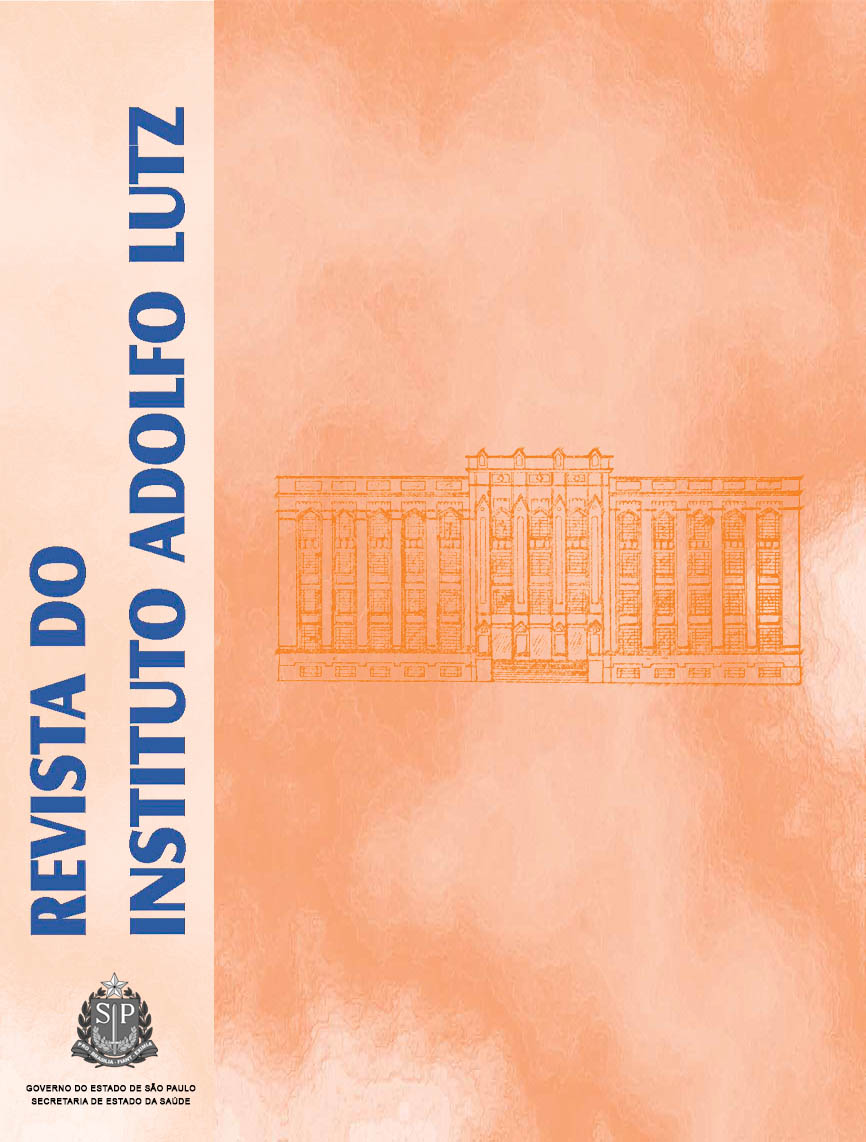Abstract
The mutagenic effects of organophosphorate temephos on mice bone marrow cells was investigated through the micronucleus formation test. Doses of temephos (27.75; 55.5 e 111.0 mg/kg) were orally administered to males and females Swiss Webster mice. Cyclophosphamide (CPA, 25 mg/kg) per via i.p. and water (10 mL/kg) were administered in mice as positive and negative control groups, respectively. Mutagenic effects were evaluated from 24h to 72h after giving a single dose, and after nine doses of 111.0 mg/kg weekly administered. Ten thousand bone marrow cells per experimental group were analyzed. In the positive controls, the percentages of polychromatic erythrocytes micronucleus (PCEMN) at 24h after a single dose were 1.63% in male and 2.77% in female mice. No PCEMN was observed in the negative controls group. Gradually increasing temephos doses induced PCEMN in 2.61, 3.50, and 3.69% males and 1.02, 1.37, and 1.33% females, respectively. After 72h, CPA caused 0.05% of PCEMN in both males and females; and the temephos caused 0.92% in males and 0.18% in females. In mice administered with nine doses of CPA, PCEMN was detected in 0.15% males and 0.8% females, although PCEMN values were significantly higher in temephos receiving mice group. The mutagenic effects of temephos on both male and female mice were evidenced by chromosome alterations inducing micronucleus formation.References
1. Forget G. Pesticides and the third world. J Toxicol Environ Health1991;32:11-31.
2. Zaim M, Guillet, P. Alternative inseticides: an urgent need. TrendsParasitol. 2002;18(4):161-3.
3. Fundação Nacional de Saúde (BR). Coordenação Regional dePernambuco. Relatório de situação das atividades de epidemiologia,sistema de informação e entomologia relacionadas ao PEAA, no estadode Pernambuco. Recife. A Fundação; 2001.
4. Secretaria Estadual de Saúde. Diretoria de Epidemiologia e VigilânciaSanitária. Dengue: - Relatório de Ações da Subcomissão deEpidemiologia. Recife: A Secretaria; 1987.
5. Secretaria Estadual de Saúde. Diretoria de Epidemiologia e VigilânciaSanitária. Estruturação do Plano de Erradicação de Aedes Aegypit noBrasil (PEAA), em Pernambuco. Recife: A secretaria; 1997.
6. Taylor P. Anticholinesterase agents. In: Brunton L, Lazo J, Parker K.Goodman & Gilman’s. The pharmacological basis of therapeutics. 8thed. New York: Editor; McGraw Hill; 1991.p.131-149.
7. World Health Organization. WHO Specifications and evaluations forpublic heal th pesticides: temephos [monografia na internet]. Genebra: Aorganização; 2007 [cited 2008 may 8]. Available from <http://www.who.int/whopes/quality/ Temephos_eval_June_2007_corr_aug160807.pdf>
8. Aiub C A F, Coelho E C A, Sodré E, Pinto L F R, Felzenszwalb I.Genotoxic evaluation of the organophosphorous pesticide temephos.Genet Mol Res. 2002;1(2):159-166.
9. Giri S, Prasad S. B, Giri A,Sharma G D. Genotoxic effects of malathion:an organophosphorus insecticide, using three mammalian bioassays invivo. Mutat Res. 2002;514:223-31.
10. Pavão A C, Leão M. Riscos de carcinogênese química no controle deAedes aegypti. In: Augusto L G S, Carneiro M R, Martins P H. Abordagemecossistêmica em saúde: Ensaios para o controle de dengue. Recife:Editora Universitária da UFPE. 2005 p. 213-225.
11. Cavaliere M J, Calore E E, Perez N M, Puga F R.. Miotoxicidade pororganofosforados. Rev Saúde Pública. 1996;30(3):267-72
12. Eyer P. Neuropsychopathological changes by organophosphoruscompounds: a review. Hum Exp Toxicol. 1995;14:857-864.
13. Koifman S, Koifman R J, Meyer A. Human reproductive systemdisturbances and pesticide exposure in Brazil. Cad Saúde Pública. 200218(2):435-445.
14. Repetto R, Baliga S. S. Review article: Pesticide and immunosuppression:the risks to public heath. Health Policy Plan. 1997; 12(2):97-106.
15. Ashby J. Comparison of techniques for monitoring human exposureto genotoxic chemicals. Mutat Res. 1988;204:543-551.
16. Degraeve N, Moutschen J. Genetic and cytogenetic effects induced inthe mouse by as organophosphorus inseticide: malation. EnvironRes.1984;34:170-4.
17. Cairns J. Somatic stem cells and kinetics of mutagenesis andcarcinogenesis. Proc Natl Acad Sci. 2002;99:10567-10570.
18. Loeb L, Loeb K R, Anderson J P. Multiple mutations and cancer. Proc.Natl. Acad. Sci. 2003;100:776-781.
19. Sarasin A. An overview of the mechanisms of mutagenesis andcarcinogenesis. Mutat Res. 2003;544:99-106.
20. Von Ledebur M, Schmid W. The micronucleus test. methodologicalaspects. Mutat Res. 1973;9:9-117.
21. Heddle J A, Hite M, Kirkhart B, Mavournin K, Mac Gregor J T, NewellG T Salamone M F. The induction micronuclei as measure ofgenotoxicity. A report of the U.S. Enviromental protection agencygene-tox program. Mutat Res. 1983;123:61-118.
22. Hayashi M, Mac Gregor J T, Gatehouse D G, Adler Ilse-Dore, BlakeyD H, Dertinger S D. In vivo rodent erythrocyte micronucleus assay. IISome aspects of protocol design including repeated treatmentsintegration with toxicity testing, and automated scoring. EnvironMol Mutagen. 2000;35(3):234-52.
23. Krishna G, Hayashi, M. In vivo rodent micronucleus assay: protocol,conduct and data interpretation. Mutat Res. 2000;455:155-166.
24. Schmid W. The Micronucleus test. Mutat Res. 1975;31:9-15.

This work is licensed under a Creative Commons Attribution 4.0 International License.
Copyright (c) 2008 Instituto Adolfo Lutz Journal
